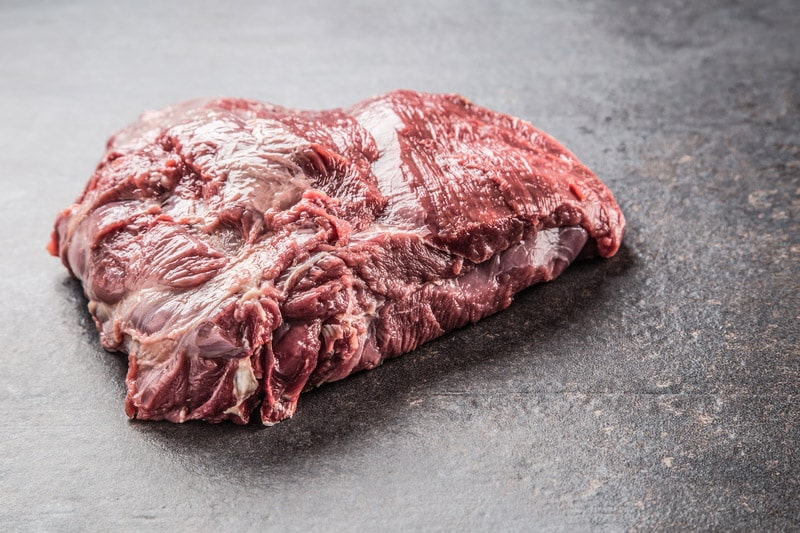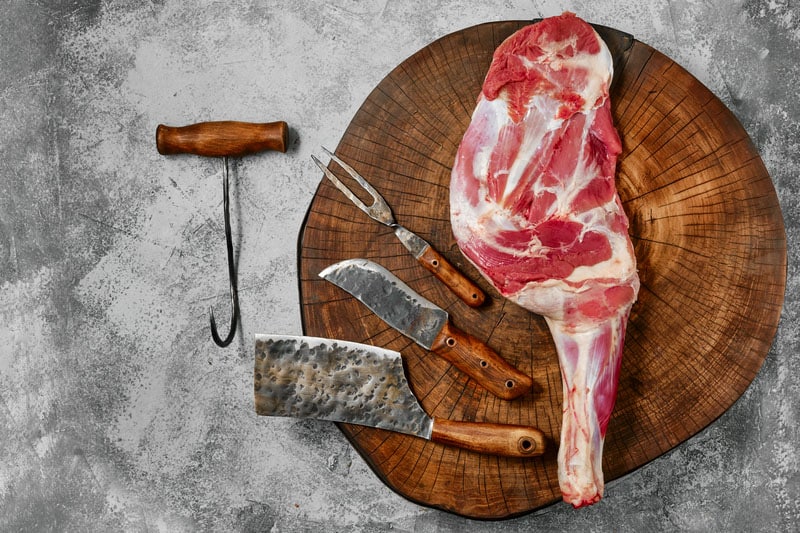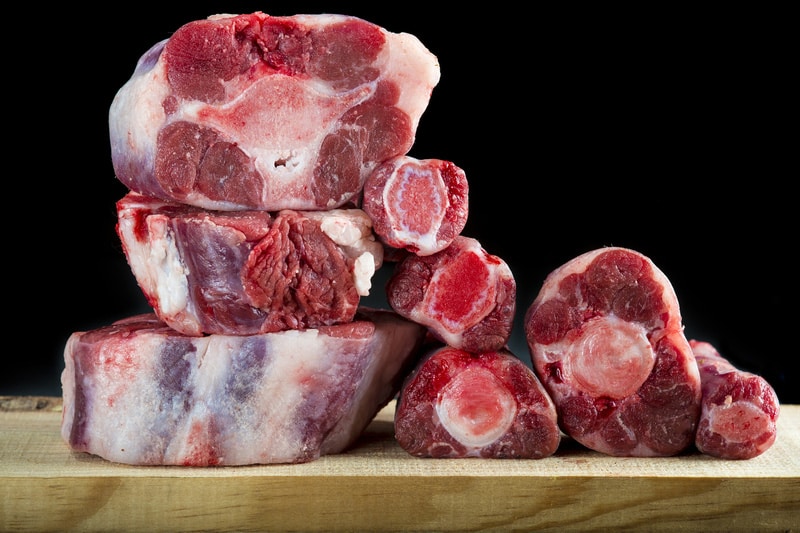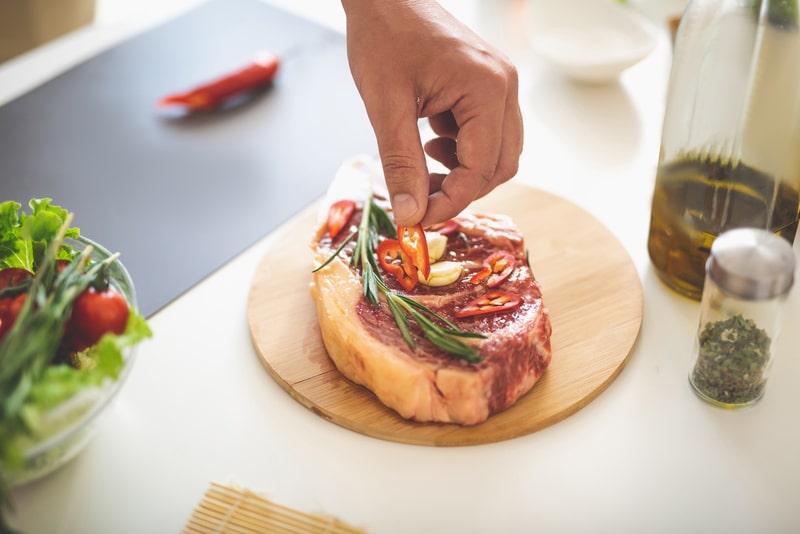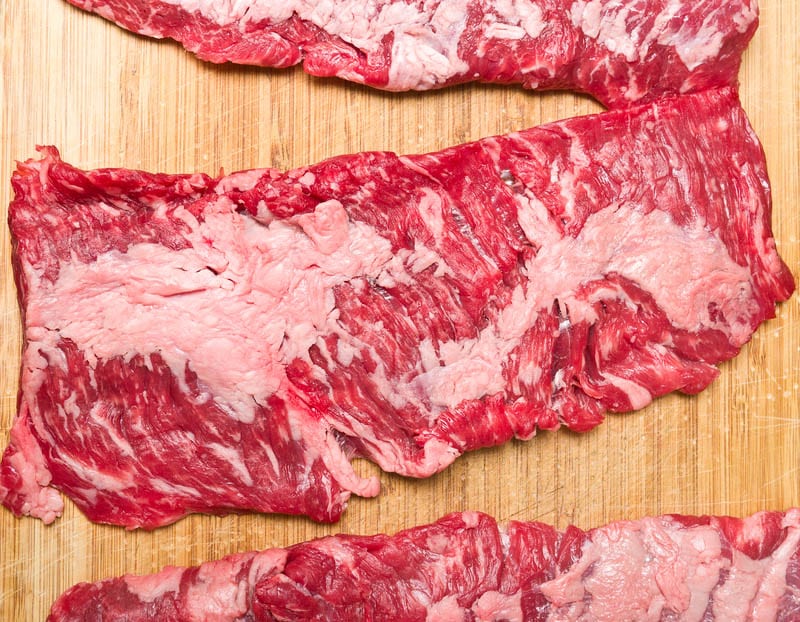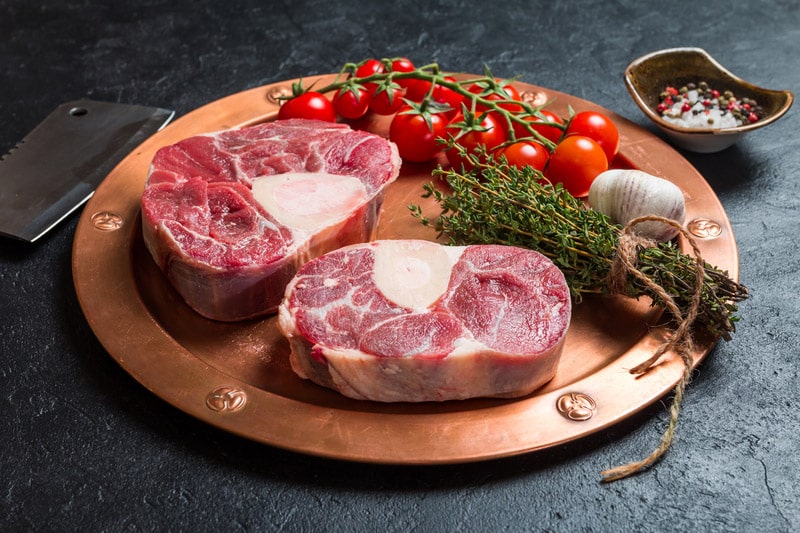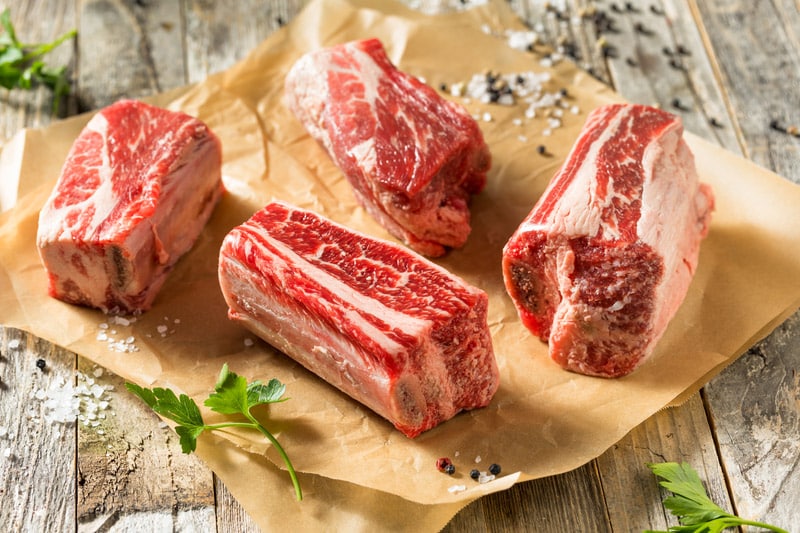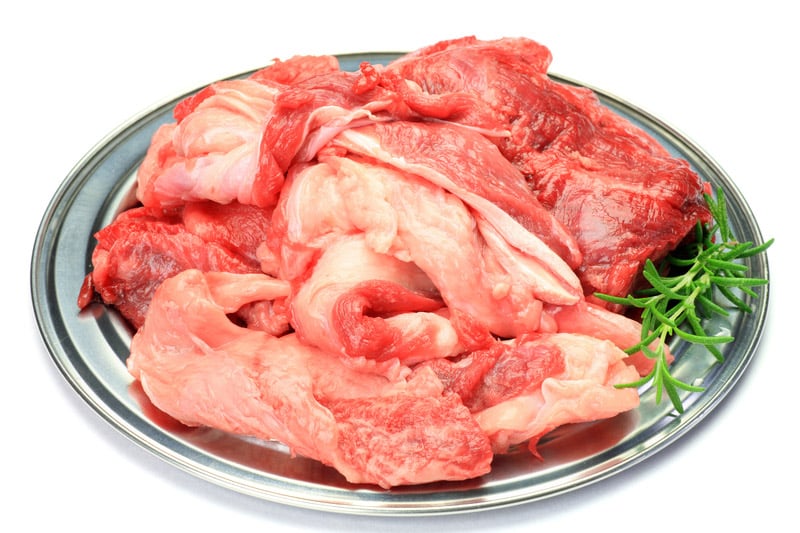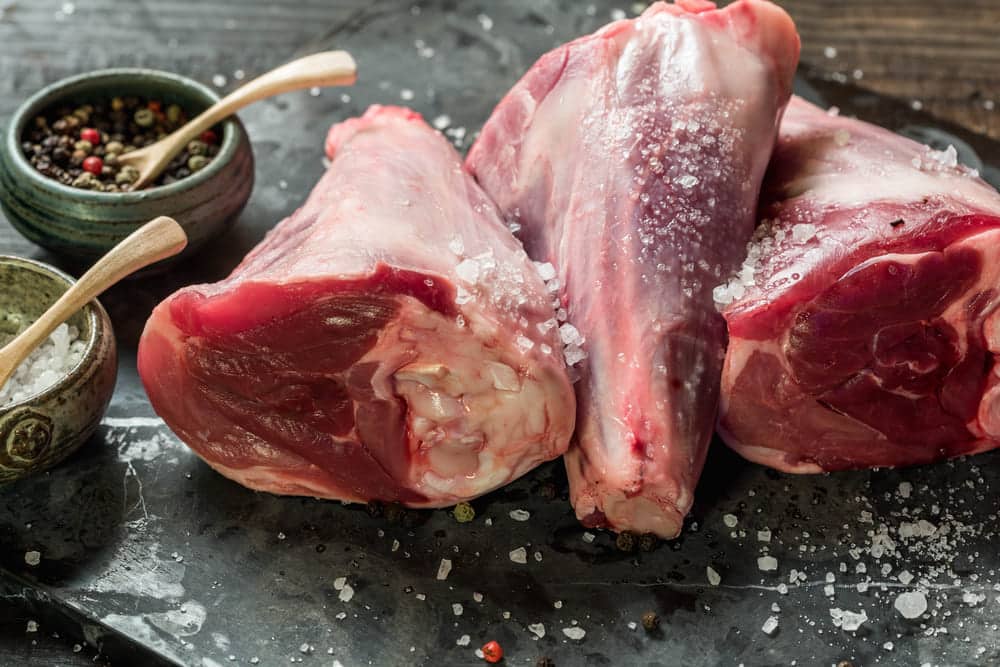
Lamb shank is cut from the lamb’s shin and is one of the most delicious and flavorful cuts. It’s cooked at low heat for hours to achieve the velvety and fall-of-the-bone texture. This cut has a high collagen content, which gives it a meaty and soft mouthful.
In addition, it has a gamey flavor and is actually very affordable. However, if you cannot find lamb shank, there are some substitutes that you can try!
Lamb Shank Substitutes
The beef neck is a perfect option for people who like more fat. The neck portion of the animal gets more movements, which toughens the meat but slow-cooking and fat content help tenderize it.
In addition to slow cooking, it can be cooked in a pressure cooker and can be used to prepare stews and soups. The beef neck cut is affordable and has bones, which add flavor to the meat. Furthermore, the bones are meaty and soft, so they can be chewed as well.
This cut is perfect if you want to prepare steak because it has a substantial amount of fat and can undergo the slow-cooking process without becoming tough.
- Shoulder Shank
The lamb shank is cut out from the legs’ rear or front part and can be substituted with a shoulder shank. The shoulder shank is a tough cut and needs slow cooking (the temperature must be low).
It is suitable for preparing lamb soup and stew. What’s even better? It’s extremely affordable and can be purchased from butcher shops.
- Oxtail
Oxtail is one of the most delicious cuts of meat and is cut from the cattle’s tail. The oxtail weighs around seven to eight pounds before it’s skinned and cut into smaller pieces. It has an abundance of gelatin because of collagen.
There is marrow in the middle, which is surrounded by fat and meat. Oxtail has a higher amount of cartilage and bone with less meat, which is why it can be cooked at a low temperature.
It can be used to prepare stews and soups because slow cooking and long braising process help tenderize the meat and extract the flavor. The slow cooking process transforms cartilage and bone into gelatin, which can be made into sauce.
The experts recommend cooking this cut for at least three hours, and you can use pressure cookers or slow cookers. Leaving it overnight can help develop a deeper flavor. Overall, it has a rich flavor and achieves a silky and tender texture.
- Beef Arm Roast
This meat comes from the cattle’s arms and shoulders. Since the arm and shoulder muscles are frequently used by the animal, the meat can be tough – the tough texture makes it suitable for slow cooking.
It has a sufficient amount of fat, which means the meat becomes tender and flavorful. Besides, slow cooking helps release the juices. This is a primal cut that comes from the shoulder part, which has a round bone. The meat is extremely tender and lean when cooked.
It is recommended that you use beef arm roast for long and slow cooking methods as it’s essential to soften the meat’s texture but make sure you cook it with the bone.
- Silverside
This meat cut comes from the animal’s hindquarters, which is between the topside and the knuckle of the leg. It is full of muscle and can be tough. The toughness of the cut makes it ideal for slow cooking.
However, it doesn’t have much fat, which makes it suitable for people who need a low-fat option. It can be cooked with braising liquids, such as red wine, beef stock, tomato sauce, and mushroom soup.
Apart from that, it can absorb the flavor and aroma of the ingredients and become flavorful. This is a large cut with boneless and lean meat with a coarse and grainy texture. The cut has a silver membrane that covers the internal meat.
In addition to slow cooking, it can be roasted in an oven or pot but make sure you use the braising liquid. The braising liquid helps create steam, which helps soften the joint. Also, mini joints are available, which are enough for two to three people. It is advised to braise the meat to make it juicy and tender.
This is one of the most versatile meat cuts and is cut out from the plate section. It is extremely fatty, and cooking makes the texture soft. The skirt cut has to be cut against the grain in the form of thin strips to make sure the meat softens.
In most cases, the skirt cut is slow-cooked, but if you have to cook it on a grill, make sure you char it to prevent dryness. The skirt steak can be used to prepare fajitas.
As far as preparation is concerned, you can cook it at a higher temperature for a short period to make sure it achieves a juicy texture. Lastly, you should cook it to medium or medium-rare.
- Veal Shank
The veal shank is cut from the fore shanks and hind shanks of the cow (the male calves are usually used for this cut). The matured veal shank can replace lamb shank as it’s a tough cut and is cut in the cross-cut form.
This cutting method reveals the shin bone’s cross-section, which looks good when served. A cut from the hind shanks is larger and yields more meat as compared to the fore shanks. Once cooked, the veal shanks become very soft, but it’s recommended that you prepare it with bone and marrow to keep it juicy.
The short ribs are cut from the chuck part of the animal – these are the first five ribs that aren’t a part of the actual rib portion. The short ribs are prepared with bone, but you can also remove the bone and cook the meat only. The meat is chewy and tough (it won’t be very soft after cooking, either).
However, it is extremely flavorful and tastes delicious when it’s grilled. The short ribs can be slow-cooked after braising, which helps the meat to fall off the bone. It has more fat, which plays an important role in tenderizing the meat.
- Beef Tendon
This is a part of connective tissue and is located between the muscles and bones. It is a lean, fibrous, and tough meat, but it doesn’t have much fat. For this reason, it needs longer cooking. It is widely used in Thai, Chinese, Vietnamese, and Japanese cuisines.
It can be simmered for hours as it helps release the flavor. The beef tendon has a high level of collagen and low-fat content, which makes it suitable for people with blood pressure and cholesterol issues. Furthermore, it is a great source of calcium, vitamin B1, vitamin B2, iron, and phosphorus.
Like arm roast, the chuck roast is also cut from the cattle’s shoulder, but it has a part of the neck as well. It is an extremely tough cut, and there is a reasonable amount of fat. Also, this fat content is enough to cook the meat without adding more oil.
The combination of fat and meat gives it a marbled texture. When slowly cooked, the chuck roast achieves a beefy flavor. This is a suitable choice for people who don’t like the chewiness of lamb shank.
Chuck roast is a large cut and can be used to make flat iron steak. It can be prepared in a pressure cooker or through braising.
The Bottom Line
The lamb shank is an affordable and popular cut for slow-cooking and preparing soups and stews.
However, there are various substitutes that you can try – all these cuts are easy to find in butcher’s shops and can be slow-cooked. Also, the majority of them are affordable and can be used interchangeably.
